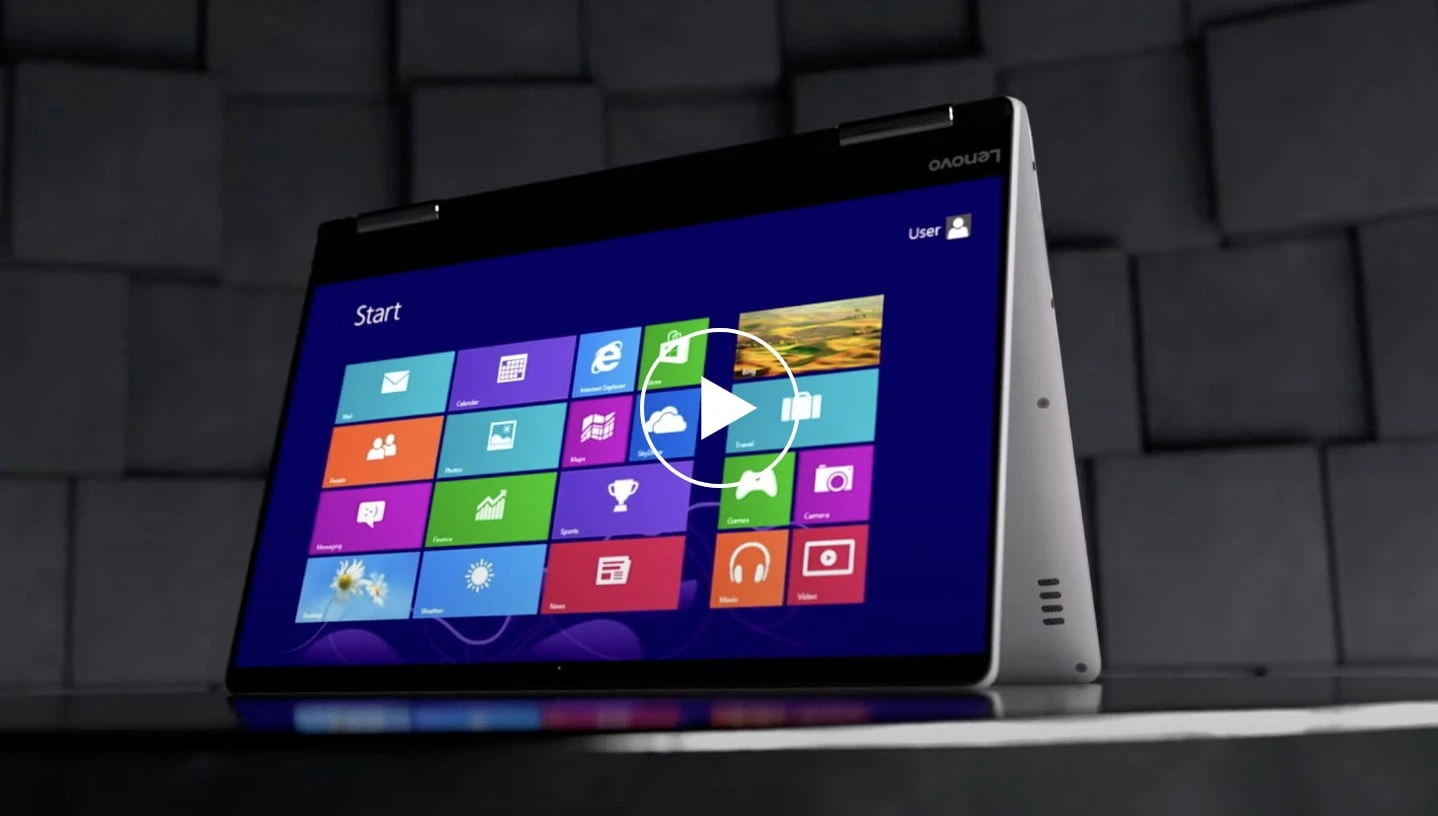Foldables are starting to move beyond the early adopter bubble thanks to tech innovations, broader adoption and the new work-from-anywhere normal
When Lenovo started digging into how its customers were using the ThinkPad X1 Fold—the first foldable laptop of its kind—one surprising comment kept cropping up. As Carly Okerfelt, the Global Head and Category Director for Lenovo’s Future Computing division, puts it: “People were using it like a traditional PC, with the keyboard on the lower half of the screen in traditional laptop mode.” The 13.3-inch Windows hybrid was launched in 2020 and Lenovo’s user experience teams confirmed that with foldables, as with any new form factor, users automatically use it in a familiar way. Then they begin to explore.
For a foldable PC owner, this might mean pulling the device out and using it as a large OLED touchscreen tablet, or positioning the foldable PC like an open book to display multiple apps on-screen. By exploring the flexibility it offers, the user can learn over time how a foldable fits into their life. Indeed, the answer to the question of “what is a foldable?” is still in flux at this early stage of development.
Any device that offers a thin, flexible display on a hinge, and two or more form factors as a result, can be considered a foldable—whether it folds horizontally or vertically, inwards or outwards, and offers a phone + tablet hybrid, a tablet + laptop hybrid or any other variations. One aspect of the category’s future is in no doubt: for many of the world’s most influential technology makers, foldables will be a major focus of R&D and innovation in the next decade.
Only a few years ago, foldables were considered a gadget form factor in search of a problem to solve. Now, a number of trends are converging to take foldables further into the mainstream in the shorter term: Brands are releasing improved second, third and fourth generation products; broader adoption means that costs are dropping to bring these devices in line with “flagship” price tags and major shifts in remote working habits around the world are creating new challenges in search of innovative ideas.
The work-from-anywhere normal
Now that travel is possible again, there could be a leap in demand for ultra-portable devices that can be productive wherever we need to work, from an airplane tray table, to on the lap in a car, to a desk in the office, or from the couch at home. According to a Mckinsey survey published in June, 58 percent of workers in the US have been offered the option to work from home at least one day a week, and 87 percent are taking the opportunity to work outside the traditional office—a mix of home working and external meetings with customers and contacts. In some cases, the West is lagging behind in work-from-anywhere tech trends. “We have 5G as an optional add-on for the X1 Fold,” says Okerfelt. “And in China and Asia, especially, they’re all-in on 5G and being able to connect from anywhere.”
No longer an expensive gamble
IDC’s February 2022 research report on foldables predicts that 27.6 million foldable phones will be sold in 2025, up from 7.1 million in 2021. Predictions across the industry vary, with Okerfelt suggesting, based on conversations with display manufacturers, that as soon as 2025, foldables will move out of the early adopter bubble. The cost of the foldable panel can be up to 10x the cost of a traditional notebook panel, but with more tech companies now moving into foldable PCs, and announcements at CES 2022, costs will start to come down in the next few years.
“The crucial thing is we have now reached the point where consumers are not being asked to take an expensive gamble on foldable tech,” says Jeremy White, senior innovation editor for WIRED. Only a few iterations in, he explains, “bendy phones” seem like more of a legitimate choice: “Not only have prices dropped since they first appeared, already the screens are getting an overhaul.” Annoying display issues, such as the screen crease, are being addressed, and new players are joining the fray with fresh design and interface concepts.
Next generation foldables
Foldable technology continues to challenge designers and engineers in 2022, and the folding OLED panels remain a big focus. Recent experiments in form factors include a “rollable” display from Oppo, more compact “flip” formats from Motorola and Samsung, and a move from first-gen plastic polymer screens to ultra-thin glass. Elsewhere, engineers are working on the development of the hinge mechanisms which underpin any foldable device. More iterative improvements can be seen in battery life and thermal performance. The user experience is also a work-in-progress, though some UI pain points experienced by early adopters have already been addressed. For instance, the Windows 11 update adds foldable-friendly features, such as larger touch targets and a quicker rotation reaction time.
“The real challenge is to make these devices as sturdy as their inflexible counterparts,” says WIRED’s Jeremy White. Some of the previous generation of high-end foldable phones were water-resistant to an IPX8 rating, but not dust-resistant. That’s changing. “Users should not feel they need to compromise on anything on a folding device, as long as they are charged any sort of premium for the tech,” he says. The same thing goes for foldable PCs: they need to be durable, hence Lenovo committing to Mil-SPEC testing for its folding ThinkPad line.
Throughout 2019, if you tuned into a major tech launch, you would hear CEOs declaring that foldables were the future. The following three years featured unanticipated lockdowns and production slowdowns which delayed product timelines—but this hold on innovation was temporary. Now that the world is opening up again, we’re seeing a return to those original ambitions of foldables as the future of computing. One thing’s for certain: If you want the best tech in 2022, it’ll probably fold. Wait to see what unfolds next at www.lenovo.com/x1fold


